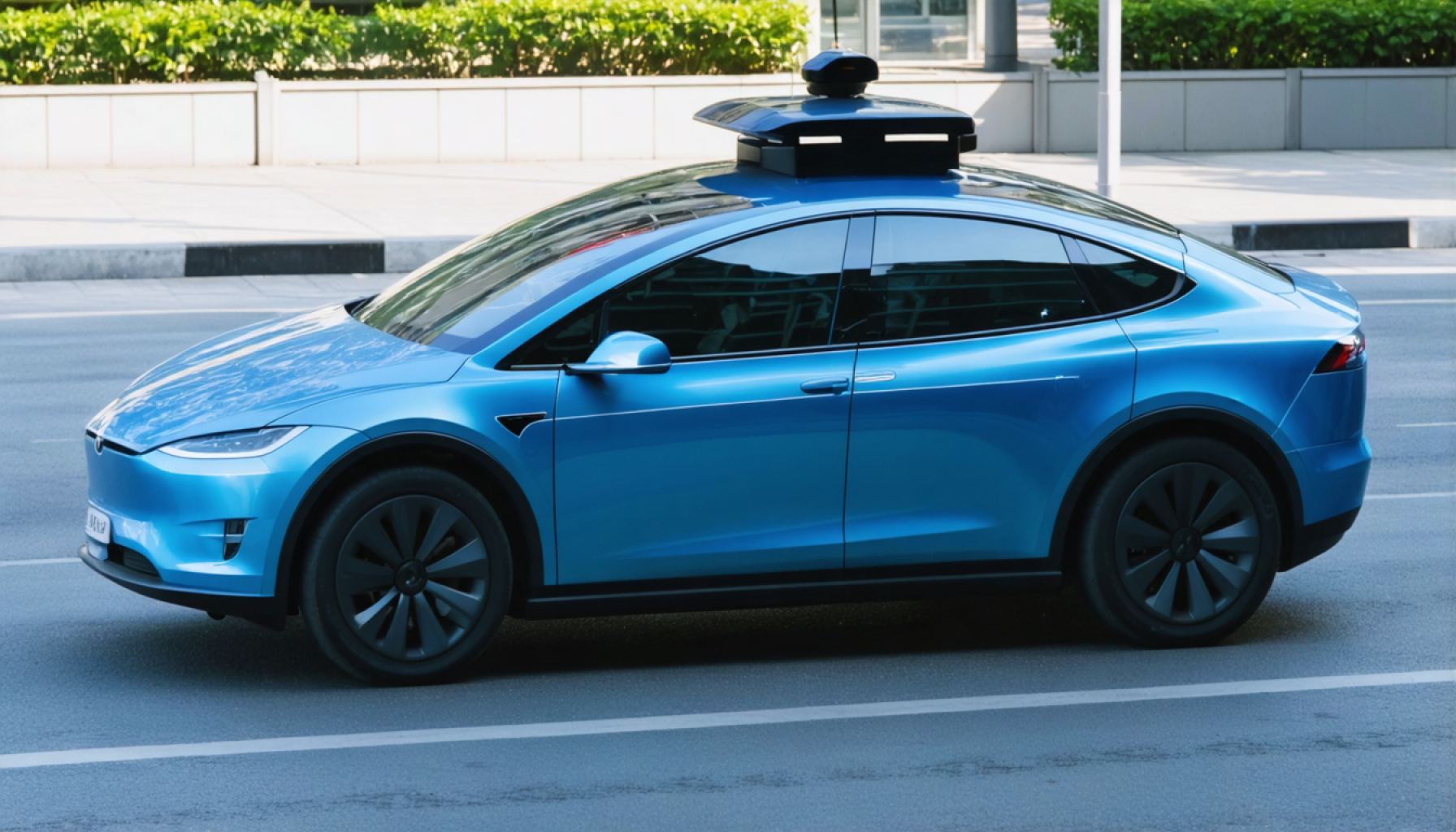- China has banned terms like “autonomous driving” in ads for non-autonomous vehicles, prompting a push for clarity in auto tech marketing.
- A tragic crash involving a Xiaomi SU7 sedan with an ADAS system highlighted the risks of misunderstood vehicle capabilities.
- The regulatory move emphasizes transparency and consumer awareness about driver assistance systems versus true autonomy.
- Over half of consumers mistakenly equate ADAS with full autonomy, prompting global scrutiny of misleading marketing.
- Experts suggest using clear terms like “hands-on, eyes-on” to convey technical capabilities and bridge consumer knowledge gaps.
- China’s regulation highlights the global need for responsible language in tech, balancing innovation with consumer safety and awareness.
- The main takeaway: Technological advancements demand human responsibility, truth, and clarity in communication.
The bustling streets of Shanghai, the neon glow of Beijing, and the ever-evolving mosaic of urban China have long been backdrops to the rapid advance of technology. But as autonomous vehicles cruise quietly into public awareness, China has set a decisive course correction. This nation, known for both its innovation and control, has reportedly declared a ban on carmakers using terms like “autonomous driving” or “smart driving” in advertisements for vehicles that are not truly self-driving.
The catalyst behind this regulatory tightening was a tragic moment—a fiery crash involving a Xiaomi SU7 sedan. The vehicle, although equipped with an advanced driver assistance system (ADAS), was not fully autonomous. As the driver tried to regain control at high speed, a fatal collision ensued, highlighting the murky intersection between human and machine capabilities.
China’s recent measures underscore a critical message: clarity is paramount. In an age where dazzling technology and marketing sometimes blur the lines of truth, these regulations aim to redefine consumer perceptions. It is a call for transparency, reminding both producers and consumers that responsibility cannot be outsourced to algorithms just yet.
Across the globe, there has been a persistent, almost hopeful, conflation of terms like “driver assistance” with the more futuristic “self-driving”. Over half of consumers, surveys find, mistakenly equate ADAS with full autonomy. Companies such as Tesla have faced scrutiny for offering features labeled as “full self-driving,” which purports a level of vehicle independence that doesn’t fully exist.
Experts from universities and tech labs echo China’s sentiment. In the UK and elsewhere, misleading language in marketing autonomous tech is being scrutinized heavily. The upcoming UK legislation looks to curb these linguistic liberties, ensuring people understand precisely what their vehicles can— and cannot —do.
Academics argue for new terminologies that resonate with public understanding while conveying precise technical capabilities. Instead of opaque SAE levels, perhaps descriptive terms like “hands-on, eyes-on” for basic assistance, or “hands-off, eyes-on” for more advanced systems, could bridge the knowledge gap.
China’s ban, more than a regulatory decree, is a global spotlight on the urgency of redefining how we speak about these technologies. It’s time for industries worldwide to adopt a language of caution, clarity, and consistency—ensuring consumers remain both informed and alert.
As the world navigates this automotive renaissance, the key takeaway is simple yet profound: technological advancement cannot eclipse human responsibility. It’s a journey requiring both innovation and integrity, where the road ahead must be paved with truth, not just technological prowess.
China’s Bold Move to Regulate Autonomous Driving Terminologies: What You Need to Know
China Tightens the Reins on Autonomous Vehicle Marketing
In recent years, the rapid advancement of autonomous vehicle technology has captured the imagination of people worldwide. However, alongside this exciting progression, the need for clarity and responsibility has heightened, prompting China to implement proactive measures. The nation has announced a ban on the use of terms like “autonomous driving” or “smart driving” in vehicle advertisements unless the vehicles are truly self-driving. This move follows a tragic incident involving a Xiaomi SU7 sedan, which underscored the potential dangers of misrepresenting vehicle capabilities.
Why Is China Cracking Down on Autonomous Vehicle Marketing?
1. Safety Concerns: The tragic crash involving the Xiaomi SU7 sedan highlighted the lethal consequences of misunderstandings regarding driver assistance technologies. The incident served as a wake-up call for both manufacturers and regulators to ensure consumer protection through precise marketing language.
2. Consumer Misconceptions: According to global surveys, over half of consumers erroneously believe advanced driver assistance systems (ADAS) equate to full vehicle autonomy. China’s regulations aim to dispel such misconceptions, pushing for honesty and transparency in automotive technology descriptions.
3. Global Influence: China’s actions echo a worldwide trend. In regions like the UK, regulatory bodies are also scrutinizing the language used by car manufacturers to describe their autonomous and semi-autonomous driving systems. Upcoming UK legislation is poised to restrict misleading terminologies.
How to Navigate the Autonomous Driving Landscape
For Consumers:
– Be Informed: Understand the difference between ADAS and full autonomy. ADAS requires the driver’s attention and intervention, whereas fully autonomous vehicles do not.
– Stay Updated: Keep abreast of regulatory changes and advancements in autonomous technology to make informed purchasing decisions.
– Demand Clarity: Advocate for clearer communication from car manufacturers regarding the capabilities and limitations of their vehicle systems.
For Automakers:
– Adopt Clear Terminology: Use precise, descriptive terms to communicate vehicle capabilities. Consider adopting language like “hands-on, eyes-on” versus “hands-off, eyes-on” to bridge the knowledge gap.
– Focus on Education: Work on educational campaigns to inform consumers about the variety of systems and their real-world applications.
– Engage with Regulations: Participate in ongoing legal and societal discussions to align marketing strategies with regulatory expectations.
Real-World Use Cases and Industry Impact
– Technology and Trust: Automakers like Tesla have faced criticism for the terms used to market their products, such as “Full Self-Driving,” which may mislead consumers. China’s regulation could lead to a re-evaluation of marketing strategies in these companies.
– Market Forecast: With more defined terminology, consumers will likely grow more confident in purchasing vehicles equipped with autonomous technology, potentially increasing the demand for these vehicles while driving regulatory changes worldwide.
Conclusion and Quick Tips
The era of autonomous vehicles beckons innovation tempered by integrity. For such technology to truly succeed, stakeholders must strive towards an industry anchored in transparency and consumer safety. Here are a few tips to navigate this evolving landscape:
– Use Reputable Sources: Only rely on trusted and expert-reviewed sources for your information on autonomous vehicles.
– Understand Legal Terms: Familiarize yourself with the legal definitions and requirements, as they vary globally.
For more insights on technology trends and automotive innovation, explore the latest from Tesla and stay updated with industry-leading developments.











